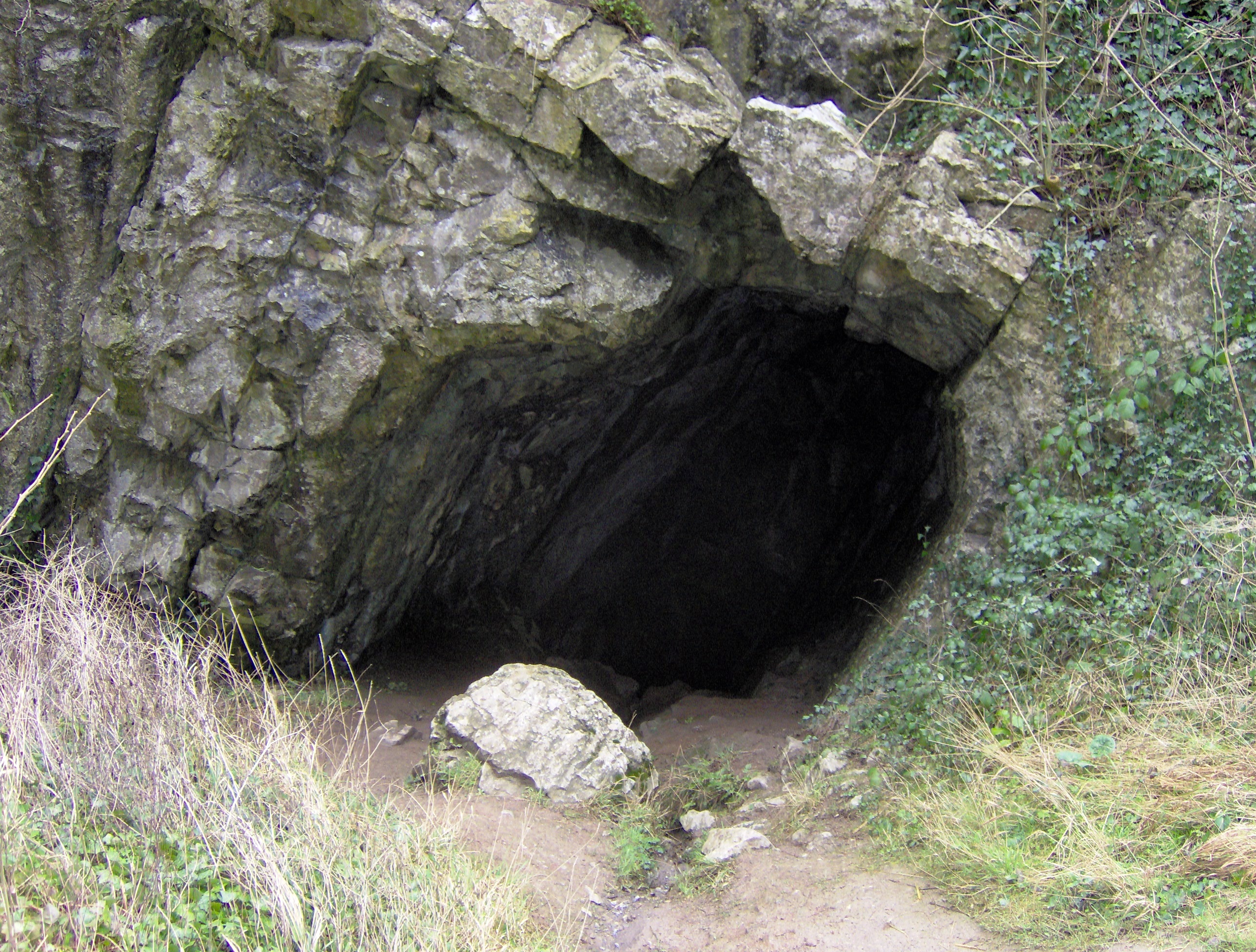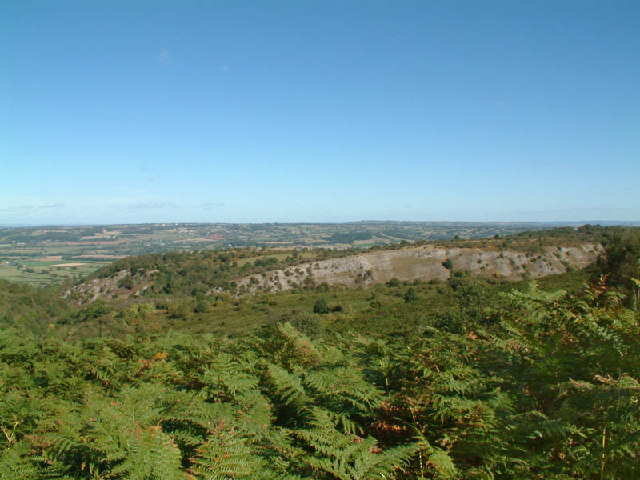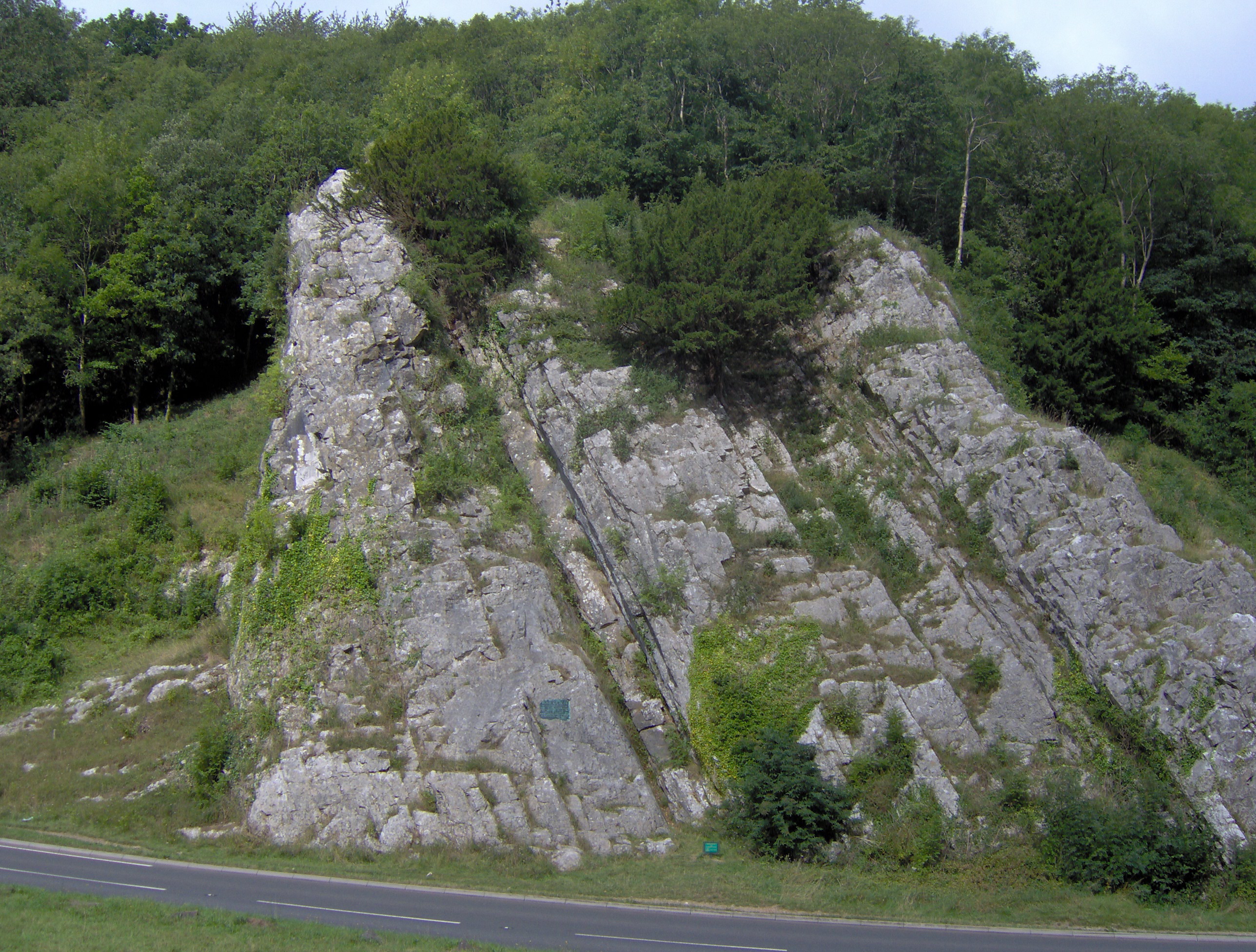Burrington Combe on:
[Wikipedia]
[Google]
[Amazon]
Burrington Combe is a Carboniferous Limestone
 A swallet, also known as a
A swallet, also known as a
 In recognition of its biological and geological interest, an area of within and around the combe was notified as a
In recognition of its biological and geological interest, an area of within and around the combe was notified as a
 There is a legend that Augustus Montague Toplady (1740–78), who was the curate at
There is a legend that Augustus Montague Toplady (1740–78), who was the curate at
gorge
A canyon (; archaic British English spelling: ''cañon''), gorge or chasm, is a deep cleft between escarpments or cliffs resulting from weathering and the erosion, erosive activity of a river over geologic time scales. Rivers have a natural tend ...
near the village of Burrington, on the north side of the Mendip Hills
The Mendip Hills (commonly called the Mendips) is a range of limestone hills to the south of Bristol and Bath, Somerset, Bath in Somerset, England. Running from Weston-super-Mare and the Bristol Channel in the west to the River Frome, Somerset ...
Area of Outstanding Natural Beauty
An Area of Outstanding Natural Beauty (AONB; , AHNE) is one of 46 areas of countryside in England, Wales, or Northern Ireland that has been designated for conservation due to its significant landscape value. Since 2023, the areas in England an ...
, in North Somerset
North Somerset is a unitary authorities of England, unitary authority in the ceremonial county of Somerset, England. The council is based in Weston-super-Mare, the area's largest town. The district also contains the towns of Clevedon, Nailsea ...
, England.
"Combe" or "coombe" is a word of Celtic origin found in several forms on all of the British Isles, denoting a steep-sided valley or hollow. Burrington Combe is a gorge
A canyon (; archaic British English spelling: ''cañon''), gorge or chasm, is a deep cleft between escarpments or cliffs resulting from weathering and the erosion, erosive activity of a river over geologic time scales. Rivers have a natural tend ...
through the limestone hills although there is now no river running through it. Various cave entrances are exposed which have been occupied by humans for over 10,000 years, with a hillfort
A hillfort is a type of fortification, fortified refuge or defended settlement located to exploit a rise in elevation for defensive advantage. They are typical of the late Bronze Age Europe, European Bronze Age and Iron Age Europe, Iron Age. So ...
being built beside the combe in the Iron Age
The Iron Age () is the final epoch of the three historical Metal Ages, after the Chalcolithic and Bronze Age. It has also been considered as the final age of the three-age division starting with prehistory (before recorded history) and progre ...
. The geology has led to a diversity of plant life.
According to legend Augustus Montague Toplady was inspired to write the hymn ''Rock of Ages'' while sheltering under a rock in the combe, although recent scholars have disputed this claim.
Geology
Water draining from Black Down has exposed rocks from theDevonian
The Devonian ( ) is a period (geology), geologic period and system (stratigraphy), system of the Paleozoic era (geology), era during the Phanerozoic eon (geology), eon, spanning 60.3 million years from the end of the preceding Silurian per ...
sandstones of the Portishead Formation which show through the limestone, Carboniferous mudstone
Mudstone, a type of mudrock, is a fine-grained sedimentary rock whose original constituents were clays or muds. Mudstone is distinguished from ''shale'' by its lack of fissility.Blatt, H., and R.J. Tracy, 1996, ''Petrology.'' New York, New York, ...
s of the Avon Group, limestones of the Black Rock Limestone Subgroup and oolitic limestones of the Burrington Oolite Subgroup; however the exact mechanism by which the gorge was formed is unknown. The northern and lower end of the combe, which was once the bed of the Congresbury Yeo
The River Yeo (often referred to as the Congresbury Yeo, after the village of Congresbury, through which it flows, to avoid confusion with other similarly named rivers) is a river which flows through North Somerset, England.
River course
...
, cuts through overlying Clifton Down Limestone. Triassic
The Triassic ( ; sometimes symbolized 🝈) is a geologic period and system which spans 50.5 million years from the end of the Permian Period 251.902 million years ago ( Mya), to the beginning of the Jurassic Period 201.4 Mya. The Triassic is t ...
dolomitic conglomerate can also locally be seen along the combe.
Caves
Archaeological
Archaeology or archeology is the study of human activity through the recovery and analysis of material culture. The archaeological record consists of Artifact (archaeology), artifacts, architecture, biofact (archaeology), biofacts or ecofacts, ...
discoveries of early cemeteries
A cemetery, burial ground, gravesite, graveyard, or a green space called a memorial park or memorial garden, is a place where the remains of many dead people are buried or otherwise entombed. The word ''cemetery'' (from Greek ) implies th ...
demonstrate human occupation of the combe and its caves from the Bronze Age
The Bronze Age () was a historical period characterised principally by the use of bronze tools and the development of complex urban societies, as well as the adoption of writing in some areas. The Bronze Age is the middle principal period of ...
with some evidence of occupation during the Upper Palaeolithic
The Upper Paleolithic (or Upper Palaeolithic) is the third and last subdivision of the Paleolithic or Old Stone Age. Very broadly, it dates to between 50,000 and 12,000 years ago (the beginning of the Holocene), according to some theories ...
period. The combe contains the entrances to many of the caves of the Mendip Hills, including Aveline's Hole
Aveline's Hole is a cave at Burrington Combe in the limestone of the Mendip Hills, in Somerset, England.
The earliest scientifically dated cemetery in Great Britain, Britain, 10,200 and 10,400 years old, was found at Aveline's Hole, constituting ...
, Sidcot Swallet and Goatchurch Cavern. A through trip has been dug from Rod's Pot to Bath Swallet, which are both on the hills above the majority of Burrington caves. Further afield and equally accessible is Read's Cavern.
Goatchurch Cavern is long and has a surveyed depth of . It was first recorded in 1736, and explored by lead miners in the 19th century.
Around 1901, the owner unsuccessfully tried to turn it into a show cave
A show cave—also called tourist cave, public cave, and, in the United States, commercial cave—is a cave which has been made accessible to the public for guided visits.
Definition
A show cave is a cave that has been made accessible to ...
. Notes of exploration in the 1920s record finds from the Pleistocene
The Pleistocene ( ; referred to colloquially as the ''ice age, Ice Age'') is the geological epoch (geology), epoch that lasted from to 11,700 years ago, spanning the Earth's most recent period of repeated glaciations. Before a change was fin ...
period including bones of mammoth
A mammoth is any species of the extinct elephantid genus ''Mammuthus.'' They lived from the late Miocene epoch (from around 6.2 million years ago) into the Holocene until about 4,000 years ago, with mammoth species at various times inhabi ...
, bear, hyena
Hyenas or hyaenas ( ; from Ancient Greek , ) are feliform carnivoran mammals belonging to the family Hyaenidae (). With just four extant species (each in its own genus), it is the fifth-smallest family in the order Carnivora and one of the sma ...
and cave lion. During November 2003 inscribed marks were noticed in Goatchurch Cavern while cleaning away graffiti
Graffiti (singular ''graffiti'', or ''graffito'' only in graffiti archeology) is writing or drawings made on a wall or other surface, usually without permission and within public view. Graffiti ranges from simple written "monikers" to elabor ...
. Three finely cut marks were uncovered, resembling the letter W with a patina
Patina ( or ) is a thin layer that variously forms on the surface of copper, brass, bronze, and similar metals and metal alloys ( tarnish produced by oxidation or other chemical processes), or certain stones and wooden furniture (sheen prod ...
darker than in nearby graffiti dated 1704. These have been identified as ritual protection marks (also known as witch marks or apotropaic marks), possibly dating from the period 1550 to 1750.
 A swallet, also known as a
A swallet, also known as a sinkhole
A sinkhole is a depression or hole in the ground caused by some form of collapse of the surface layer. The term is sometimes used to refer to doline, enclosed depressions that are also known as shakeholes, and to openings where surface water ...
, sink, shakehole, swallow hole or doline, is a natural depression or hole in the surface topography caused by the removal of soil or bedrock, often both, by water flowing beneath the water-table at considerable depth. Sidcot Swallet is named after the Sidcot School Speleological Society who explored it in 1925.
The earliest scientifically dated cemetery in Great Britain was found at Aveline's Hole. The human bone fragments it contained, from about 21 different individuals, are thought to be between roughly 10,200 and 10,400 years old. A series of inscribed crosses found on the wall of the Aveline's Hole cave are believed to date from the early Mesolithic
The Mesolithic (Ancient Greek language, Greek: μέσος, ''mesos'' 'middle' + λίθος, ''lithos'' 'stone') or Middle Stone Age is the Old World archaeological period between the Upper Paleolithic and the Neolithic. The term Epipaleolithic i ...
period just after the Ice age
An ice age is a long period of reduction in the temperature of Earth's surface and atmosphere, resulting in the presence or expansion of continental and polar ice sheets and alpine glaciers. Earth's climate alternates between ice ages, and g ...
.
Hillfort
Above the combe on its eastern side is the site of anIron Age
The Iron Age () is the final epoch of the three historical Metal Ages, after the Chalcolithic and Bronze Age. It has also been considered as the final age of the three-age division starting with prehistory (before recorded history) and progre ...
univallate hill fort known as Burrington Camp. It is around by and includes Romano-British
The Romano-British culture arose in Britain under the Roman Empire following the Roman conquest in AD 43 and the creation of the province of Britannia. It arose as a fusion of the imported Roman culture with that of the indigenous Britons, ...
elements.
Special Scientific Interest
 In recognition of its biological and geological interest, an area of within and around the combe was notified as a
In recognition of its biological and geological interest, an area of within and around the combe was notified as a Site of Special Scientific Interest
A Site of Special Scientific Interest (SSSI) in Great Britain, or an Area of Special Scientific Interest (ASSI) in the Isle of Man and Northern Ireland, is a conservation designation denoting a protected area in the United Kingdom and Isle ...
in 1952.
The calcareous grasslands support a diverse flora which includes salad burnet (''Sanguisorba minor
''Sanguisorba minor'', the salad burnet, garden burnet, small burnet, burnet (also used for ''Sanguisorba'' generally), :wiktionary:pimprenelle, pimpernelle, Toper's plant, and burnet-bloodwort, is an edible perennial plant, perennial herbaceou ...
''), knapweed ('' Centaurea scabiosa'' and '' Centaurea nigra''), rock-rose ('' Helianthemum nummularium'') and wild thyme ('' Thymus praecox''). On the higher, more acidic, slopes goldenrod ('' Solidago virgaurea''), wood sage ('' Teucrium scorodonia'') and common bent (''Agrostis capillaris
''Agrostis capillaris'', the common bent, colonial bent, or browntop, is a rhizomatous and stoloniferous perennial in the grass family (Poaceae). It is native to Eurasia and has been widely introduced in many parts of the world. Colonial be ...
'') can be found. There are also scrub plants including hawthorn (''Crataegus monogyna
''Crataegus monogyna'', known as common hawthorn, whitethorn, one-seed hawthorn, or single-seeded hawthorn, is a species of flowering plant in the rose family, Rosaceae. It grows to about tall, producing plant sexuality, hermaphrodite flowers i ...
''), mountain ash (''Sorbus aucuparia
''Sorbus aucuparia'', commonly called rowan (, also ) and mountain-ash, is a species of deciduous tree or shrub in the rose family.
The tree has a slender trunk with smooth bark, a loose and roundish crown, and its leaves are pinnate in pairs o ...
''), gorse (''Ulex europaeus
''Ulex europaeus'', commonly known as gorse, common gorse, furze or whin, is a species of flowering plant native to Western Europe.
Description
Growing to tall, it is an evergreen shrub. The young stems are green, with the shoots and leaves ...
'') and elder (''Sambucus nigra
''Sambucus nigra'' is a species complex of flowering plants in the family Viburnaceae native to most of Europe. Common names include elder, elderberry, black elder, European elder, European elderberry, and European black elderberry. It grows in ...
''). Several of the caves support bat populations.
Geologically it is recognised as a fluvial
A river is a natural stream of fresh water that flows on land or inside caves towards another body of water at a lower elevation, such as an ocean, lake, or another river. A river may run dry before reaching the end of its course if it ru ...
karst
Karst () is a topography formed from the dissolution of soluble carbonate rocks such as limestone and Dolomite (rock), dolomite. It is characterized by features like poljes above and drainage systems with sinkholes and caves underground. Ther ...
feature which partly intersects a buried and filled gorge of Triassic
The Triassic ( ; sometimes symbolized 🝈) is a geologic period and system which spans 50.5 million years from the end of the Permian Period 251.902 million years ago ( Mya), to the beginning of the Jurassic Period 201.4 Mya. The Triassic is t ...
age.
Rock of Ages
 There is a legend that Augustus Montague Toplady (1740–78), who was the curate at
There is a legend that Augustus Montague Toplady (1740–78), who was the curate at Blagdon
Blagdon is a village and civil parish in the Ceremonial counties of England, ceremonial county of Somerset, within the unitary authority of North Somerset, in England. It is located in the Mendip Hills, a recognised Area of Outstanding Natural ...
, was inspired to write the hymn ''Rock of Ages'' while sheltering under a rock in the combe during a thunderstorm
A thunderstorm, also known as an electrical storm or a lightning storm, is a storm characterized by the presence of lightning and its acoustics, acoustic effect on the Earth's atmosphere, known as thunder. Relatively weak thunderstorm ...
in the late 18th century. The rock was subsequently named after the hymn. It is now generally accepted that the attribution of this location to the writing of ''Rock of Ages'' only arose well after Toplady's death (the 1850s is suggested by Percy Dearmer
Percival Dearmer (27 February 1867 – 29 May 1936) was an English Anglican priest and liturgist best known as the author of ''The Parson's Handbook'', a liturgical manual for Anglican clergy, and as editor of ''The English Hymnal''. A lifelong ...
in ''Songs of Praise Discussed'', 1933) and has no proven factual basis.
The then Vicar at Westbury-on-Trym
Westbury-on-Trym (sometimes written without hyphenation) is a suburb in the north of the City of Bristol, near the suburbs of Stoke Bishop, Westbury Park, Henleaze, Southmead and Henbury, in the southwest of England.
The place is partly na ...
H. J. Wilkins published a 16-page booklet in 1938 titled ''"An Enquiry concerning Toplady and his Hymn "Rock of Ages" and its connection with Burrington Combe, Somerset"'' that found that in relation to the hymn "All available evidence goes to show that it was published in 1776, soon after it was written." Toplady had left the neighbourhood of Burrington Combe in 1764.
In George Lawton's 1983 publication ''Within the Rock of Ages'' the author finds the claim that ''Rock of Ages'' was written at Burrington Combe to be only a legend, although he does state that "It is extremely doubtful whether at this distance of time, the legend that it was written in a cleft there can be proved or disproved." In George Ella's 2000 study ''A Debtor to Mercy Alone'' any links between the hymn and Burrington Combe are again said to be no more than legendary, with readers being referred to Lawton's 1983 study.
C. H. Sisson wrote a poem entitled ''Burrington Combe'', collected in ''Exactions'' (Manchester: Carcanet 1980). The local area, including Black Down and Ellick Farm, features prominently in his poetry.
References
External links
{{SSSIs Avon geological Mendip Hills Sites of Special Scientific Interest in North Somerset Sites of Special Scientific Interest notified in 1952 Stone Age sites in England Archaeological sites in Somerset Former populated places in Somerset Bronze Age sites in Somerset Canyons and gorges of England